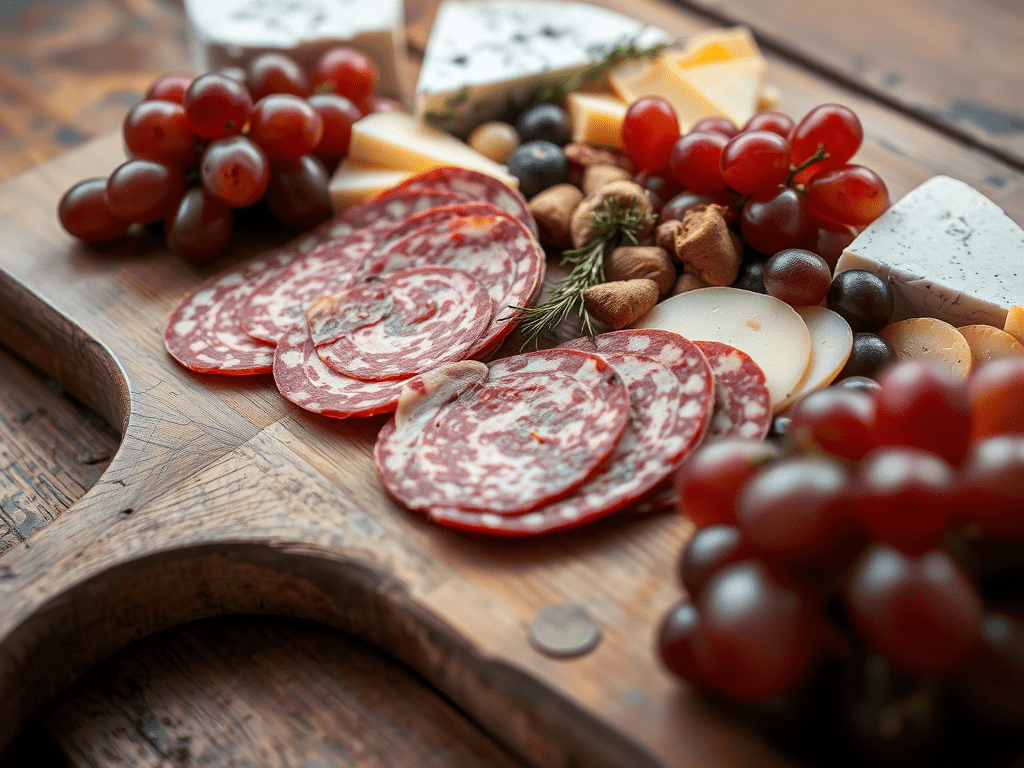Soppressata Secrets: 7 Bold Facts You’ll Love About This Flavorful Salami
There’s something undeniably bold about soppressata — it’s rich, rustic, and full of character. Whether you’ve spotted it at an Italian deli or tasted it on a well-styled charcuterie board, this traditional salami always leaves a lasting impression.
Unlike the average cold cut, soppressata brings with it centuries of tradition, intense flavor, and regional pride. But despite its popularity, many people still wonder: what exactly is soppressata? Is it a type of salami? Is it cooked or cured? And how is it different from the salami we already know?
In this guide, we’re diving deep into everything you need to know about soppressata — from its origins and how it’s made, to how to serve it like a true Italian host.
Table of Contents
What Is Soppressata?
So, what is soppressata, exactly?

At its core, soppressata is a type of Italian dry-cured salami made from coarsely ground pork, seasoned with salt, black pepper, red pepper flakes, and sometimes garlic or wine. It’s then pressed (hence the name soppressata, which comes from soppressare, meaning “to press”) into a firm, rustic shape and left to cure for weeks or even months.
But don’t mistake it for just another salami. Soppressata carries with it a sense of place — it’s the kind of meat that tastes like Sunday lunch in Calabria or a street market in Tuscany. It’s bold, slightly spicy, and intensely savory with a deep, meaty richness that sets it apart from more commercial cold cuts.
There are actually two main styles:
- Soppressata di Calabria: Spicy, cured, and protected by PDO (Protected Designation of Origin).
- Soppressata di Toscana: Often made with leftover cuts and served fresh or cooked — a totally different texture and flavor.
Whether you’re enjoying it thinly sliced on a charcuterie board or chopping it into a pasta sauce, soppressata brings an old-world intensity that makes it more than just meat — it’s a tradition.
Origins and Regional Variations
Like many of Italy’s best culinary treasures, soppressata isn’t just a product — it’s a reflection of place, tradition, and regional pride. While the term soppressata refers broadly to a pressed pork salami, the way it’s made and enjoyed can vary greatly depending on where you are in Italy.
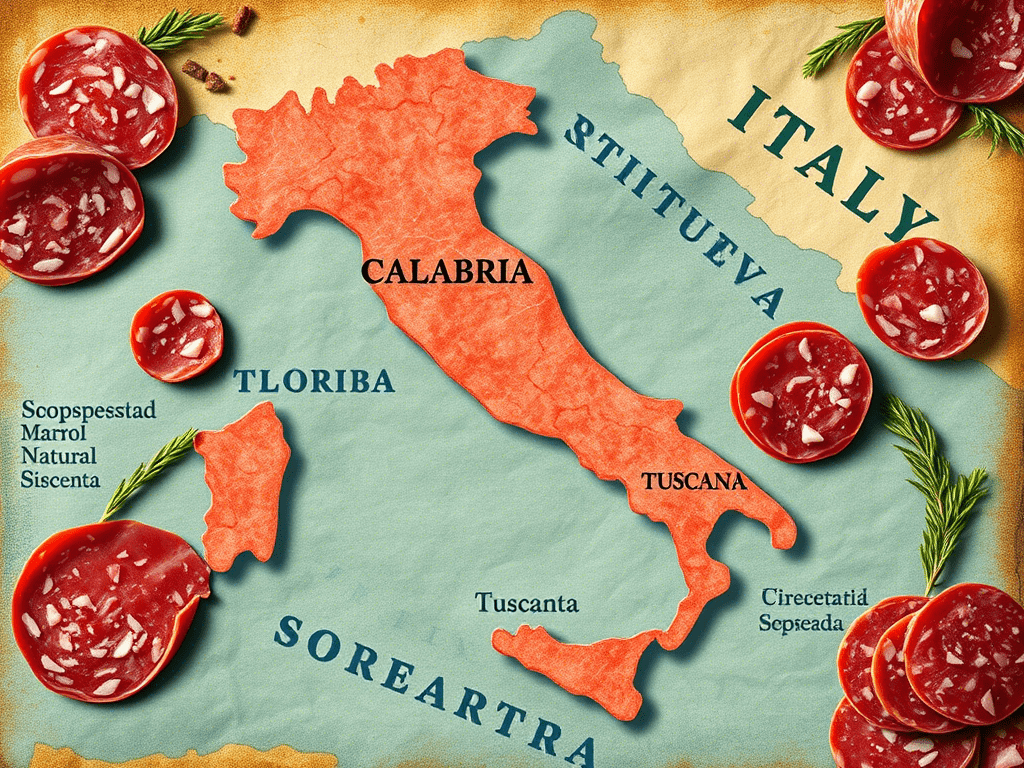
Calabria: The Spicy Standard
In Calabria, soppressata di Calabria is the gold standard. Made from selected cuts of pork like the shoulder and ham trimmings, it’s seasoned heavily with red pepper, black pepper, and sometimes fennel seeds. Once stuffed into a casing, it’s pressed between wooden boards to remove air and give it that signature flat shape.
It’s dry-cured for several weeks, resulting in a spicy, firm, and intensely flavored soppressata salami. This version is protected under the European Union’s PDO designation, which means it must follow traditional production methods within Calabria to earn the name.
Basilicata and Apulia: The Rustic Twist
In these southern regions, you’ll often find soppressata made with slightly different spice blends, sometimes using wine or vinegar in the mix. The pressing process remains, but the result might be softer or more herbaceous than the Calabrian version.
Tuscany: A Whole Different Take
If you’re in Tuscany and order soppressata, you might get something completely different. Soppressata di Toscana is typically a cooked salami made from head meat, tongue, and other cuts, often flavored with citrus zest and spices. It’s served in thick slices and eaten cold — more like a pâté than a cured sausage.
Each version tells a story. And while they all share the name soppressata, their textures, tastes, and cultural significance can be miles apart — just like the regions that created them.
How Soppressata Is Made
Making soppressata isn’t just about grinding meat and tossing in some spices — it’s an art rooted in family tradition, regional identity, and time-tested techniques passed down for generations. While the exact methods vary across Italy, the fundamentals of crafting this bold salami remain beautifully consistent.
Step 1: Choosing the Cuts
High-quality pork shoulder and ham trimmings are typically used for traditional soppressata. Unlike other sausages that use finely ground meat, soppressata keeps things rustic — the pork is coarsely chopped to retain its character and texture.
Step 2: Seasoning the Meat
Here’s where regional flair comes in. A classic soppressata salami blend usually includes:
- Salt
- Black pepper
- Red pepper flakes (especially in Calabrian styles)
- Garlic
- Sometimes fennel seeds or white wine for complexity
The seasoned meat mixture is left to rest, allowing the flavors to marry before casing.
Step 3: Stuffing and Pressing
The meat is stuffed into natural casings and traditionally tied by hand. Then comes the defining step: pressing. The sausages are laid flat between wooden boards with weights on top — this removes air pockets, helps develop the iconic flattened shape, and contributes to that firm, sliceable texture soppressata is known for.
Step 4: Drying and Curing
Once pressed, the soppressata is hung to cure in a cool, dry, and well-ventilated room — usually for 4 to 8 weeks. The longer the curing, the deeper and more complex the flavor.
Fresh vs. Aged
While most people associate soppressata with dry-cured salami, in some regions (like Tuscany), it’s also made fresh and cooked — a completely different experience in both texture and taste.
From raw meat to richly seasoned salami, the transformation is all about time, technique, and patience — and it’s what makes authentic soppressata so special.
Soppressata vs Salami: What’s the Difference?
To many, soppressata might just seem like another kind of salami — and technically, it is. But when it comes to texture, flavor, and even cultural value, there are some key differences that set it apart.
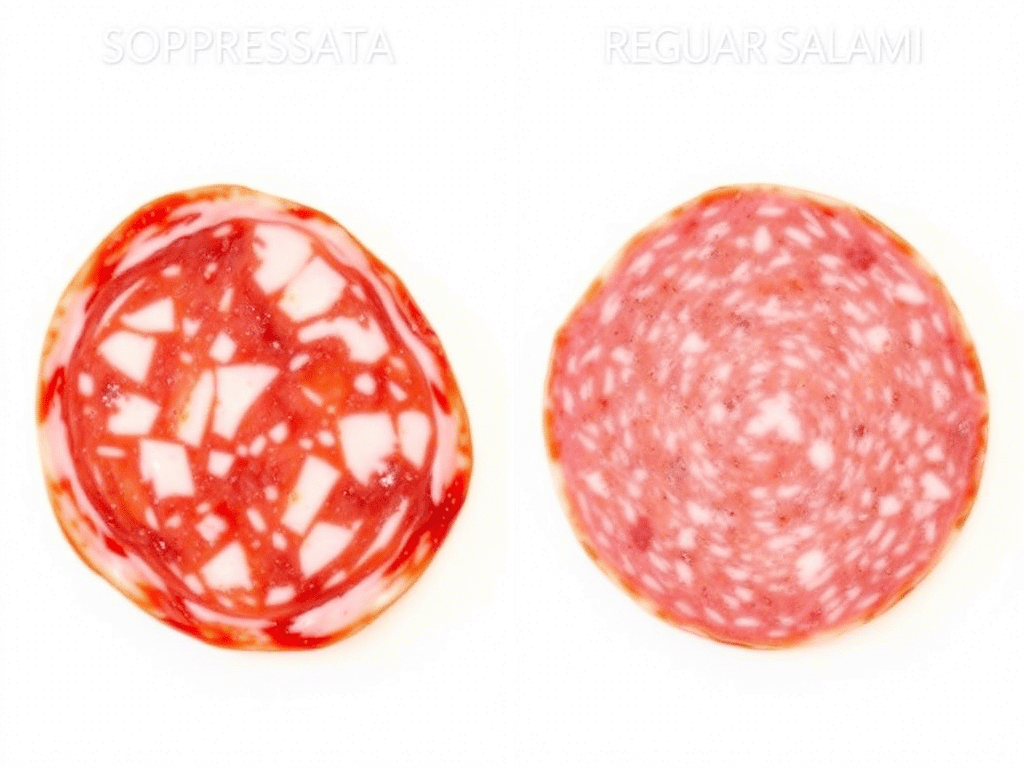
So let’s break it down: soppressata vs salami — what’s the real distinction?
1. Shape and Structure
- Soppressata is traditionally pressed flat during curing, giving it an oval, somewhat rectangular shape.
- Salami, on the other hand, is typically cylindrical and left unpressed, resulting in a round slice.
2. Meat Texture
- Soppressata uses coarsely chopped pork, which gives it a rustic, uneven texture with bold character in every bite.
- Standard salami is more finely ground, resulting in a smoother, more uniform consistency.
3. Flavor Profile
- Soppressata salami often carries more spice, especially in southern Italian versions. Expect garlic, black pepper, red chili flakes, and occasionally fennel.
- Salami tends to be milder, and depending on the variety, it might be seasoned with wine, nutmeg, or even cinnamon.
4. Curing & Preparation
- Soppressata is commonly cured for longer periods and goes through a pressing phase, which affects both shape and moisture content.
- Salami is cured without pressing, and many commercial versions use additives for consistency and longer shelf life.
5. Cultural Identity
- In Italy, soppressata is often homemade, passed down through generations, and carries a strong sense of regional pride — especially in Calabria and Tuscany.
- Salami is more widely produced and globalized, with dozens of subtypes ranging from Genoa to pepperoni.
In short, all soppressata is salami, but not all salami is soppressata. If you’re after a salami with personality, spice, and tradition, soppressata is your answer.
Flavor Profile: What to Expect
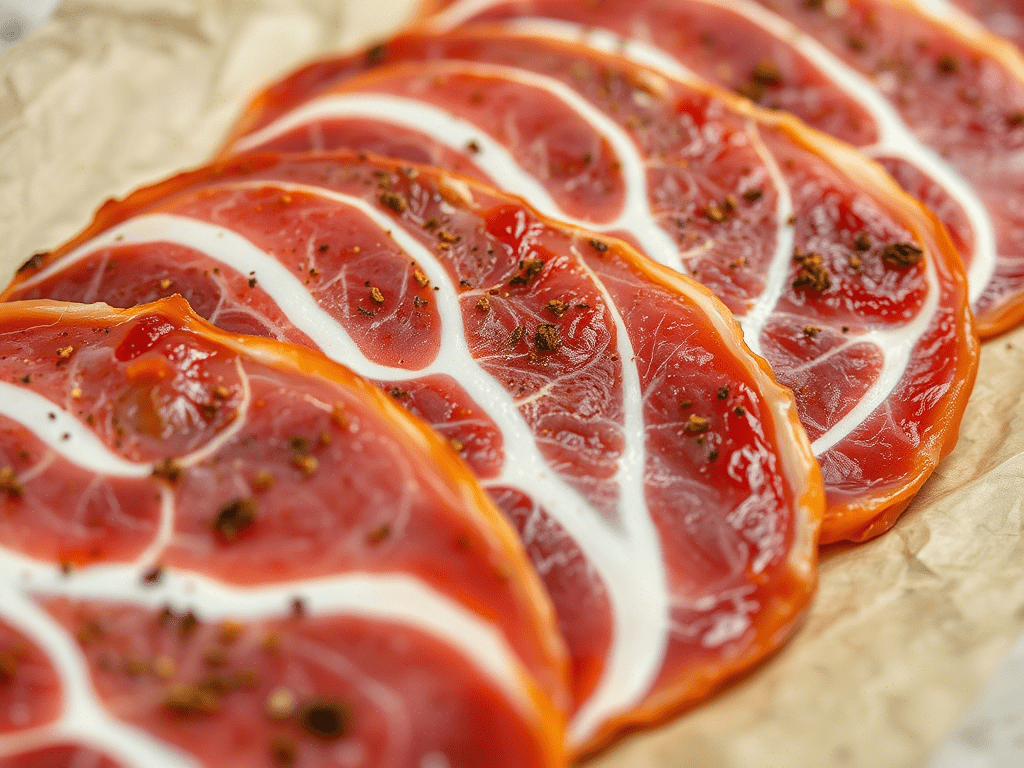
When you bite into a slice, you know it’s something special. This isn’t just another cured meat — it’s bold, rustic, and deeply savory, carrying with it a balance of heat, salt, and subtle acidity that lingers on the palate.
The flavor starts strong with garlic and black pepper, followed by a warm, slow-building heat from crushed red chili flakes. In southern Italian styles, especially the Calabrian ones, the spice level is more pronounced — not just a background note, but a main character. Northern or central versions tend to favor a gentler, more aromatic spice blend, with hints of fennel or wine.
The texture is another part of the experience. It’s firm and chewy, but not tough — like a well-aged steak with just enough give. The visible bits of fat scattered throughout aren’t just there for show — they melt ever so slightly on your tongue, delivering bursts of richness and helping to carry the spices evenly with every bite.
The aroma is sharp, meaty, and unmistakably aged. You might pick up notes of garlic, peppercorn, or even a subtle smokiness depending on how it was dried and cured. Let it sit a few minutes at room temperature before serving — the flavors open up like a fine cheese or a good red wine.
What truly sets it apart from your average deli slice is its confidence. It doesn’t try to be subtle or overly refined. It’s robust, unapologetically meaty, and meant to be eaten with intention. Pair it with a hard cheese, a sip of something red, and a slice of warm bread — and you’ve got yourself a moment.
How to Serve Soppressata Like a Pro
Serving soppressata isn’t just about tossing a few slices on a plate — it’s about presentation, pairing, and letting its bold personality shine in every bite. Whether you’re building a charcuterie board or crafting a simple snack, a few thoughtful touches can take things to the next level.

1. Slice it Thin (but Not Paper-Thin)
Use a sharp knife or deli slicer to get clean, even slices. Too thick, and it gets chewy. Too thin, and you lose the texture. Aim for that perfect in-between — something that holds up on a cracker but still melts in your mouth.
2. Let It Breathe
Bring it to room temperature before serving. Cold salami tends to mute flavors, while a bit of warmth helps release the oils and aromatics that give soppressata its signature punch.
3. Build a Board with Contrast
Here’s the fun part — building a charcuterie spread that does justice to your salami. Try pairing it with:
- Aged cheeses like pecorino or manchego
- Soft cheeses like brie or taleggio for contrast
- Fresh fruits (figs, grapes, or apple slices)
- Crackers, baguette slices, or rustic flatbread
- A drizzle of honey or a spoon of spicy mustard for a sweet-savory kick
4. Go Beyond the Board
Soppressata also shines outside the charcuterie world. Try adding thin slices to:
- Paninis or grilled cheese sandwiches
- Homemade pizza (especially with mozzarella and arugula)
- Pasta dishes for a meaty flavor boost
- Savory breakfast platters alongside eggs and toast
No matter how you serve it, the key is balance. Let the meat be the star, and surround it with textures and flavors that complement without overpowering.
Best Wine and Cheese Pairings
Pairing soppressata with the right wine and cheese isn’t about being fancy — it’s about creating harmony. A good match will elevate every bite, balancing the salami’s spice and salt with creaminess, acidity, or depth from the right companion.
Wine Pairings
Because of its bold, often spicy character, this Italian salami calls for wines that can stand their ground without overpowering the meat.
- Chianti Classico – A medium-bodied red from Tuscany with enough acidity to cut through the fat and enhance the spices.
- Barbera – Fruity, slightly tart, and perfect with cured meats — especially Calabrian styles.
- Zinfandel – For those who love a fruit-forward wine with enough backbone to complement intense flavors.
- Lambrusco (dry) – A sparkling red that’s criminally underrated. Its bubbles cleanse the palate between bites.
Cheese Pairings
Now let’s balance things out on the creamy side.
- Aged pecorino – Sharp and salty, it mirrors the intensity of the meat.
- Parmigiano Reggiano – Nutty and firm, a classic companion to anything cured and Italian.
- Taleggio – Soft, creamy, and just funky enough to add contrast.
- Goat cheese – Fresh, tangy, and ideal for milder versions.
Bonus Tip:
Try serving your cheese and salami pairings with a touch of sweetness — fig jam, honey, or dried apricots bring out new layers of flavor.
Whether you’re hosting a dinner party or just treating yourself, the right wine and cheese can turn a few slices of soppressata into an experience worth savoring.
Storage Tips for Maximum Freshness
Whether you bought a whole stick from your favorite deli or opened a vacuum-sealed package at home, proper storage is key to keeping your soppressata tasting its best — and safe to eat.

1. Whole, Uncut Soppressata
If you haven’t sliced into it yet, you’re in luck. Whole dry-cured soppressata can last up to 6 months at room temperature in a cool, dark pantry. Just make sure it’s well wrapped in butcher paper or parchment — plastic can trap moisture and lead to mold.
Once it’s opened, you can move it to the fridge, but avoid sealing it in airtight containers. Let it breathe — wrap it loosely in wax paper or cheese paper and store in the fridge’s meat drawer.
2. Pre-Sliced or Partially Used
Once sliced, the clock starts ticking. Store slices in a resealable plastic bag or an airtight container lined with paper towel (to absorb moisture), and eat within 7 to 10 days.
You can also vacuum seal it to stretch that shelf life a bit longer — ideal if you’re not planning to use it all right away.
3. Can You Freeze Soppressata?
Technically yes, but it’s not ideal. Freezing can affect the texture, making the fat crumbly and the meat slightly drier once thawed. If you must freeze it, wrap tightly in plastic, then foil, and store for up to 2 months. Thaw slowly in the fridge — never on the counter.
4. Watch for Spoilage
Signs of spoilage include:
- A sour smell (stronger than the usual cured aroma)
- Slimy surface
- Green or fuzzy mold (white mold is often harmless, just wipe it off)
When in doubt? Throw it out.
Proper storage doesn’t just protect your investment — it preserves the bold, rich character that makes soppressata worth savoring in the first place.
Is Soppressata Cooked or Raw?
This question pops up a lot — and for good reason. With so many regional variations and preparation methods, it’s easy to get confused.
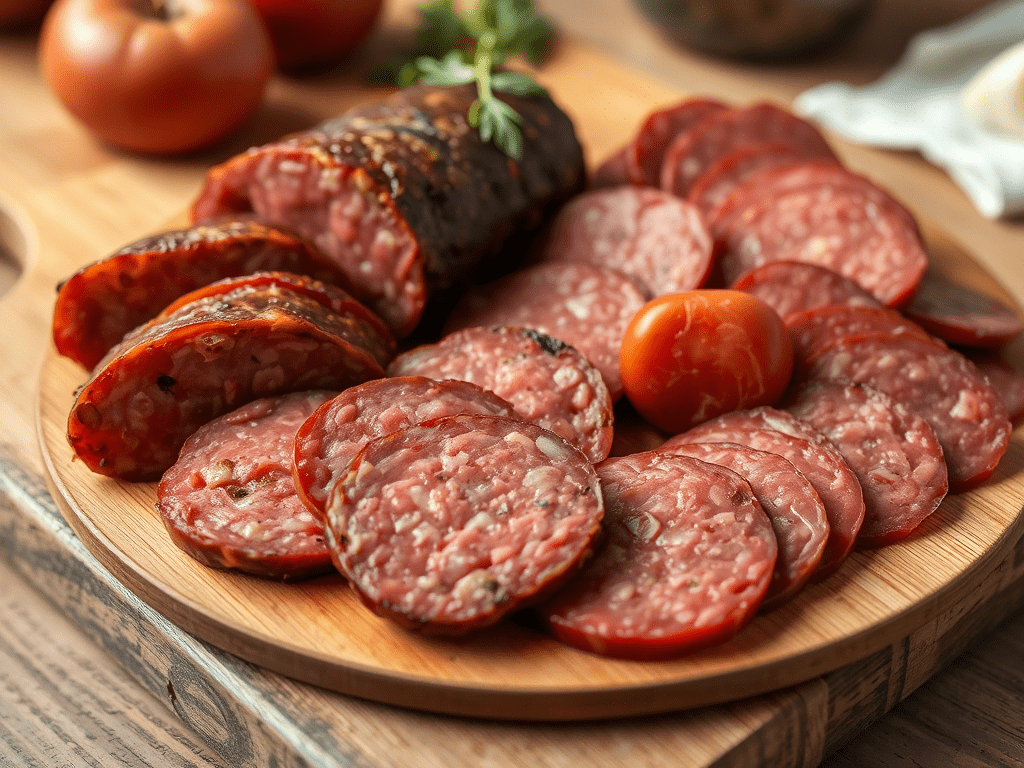
The Short Answer:
Most soppressata you’ll find in delis or packaged at stores is not cooked — it’s dry-cured. That means it’s preserved through salt, air-drying, and time, not heat. And yes, it’s totally safe to eat as-is.
Dry-Cured Soppressata (Most Common)
- These are air-dried for weeks or months.
- Safe to eat without any cooking.
- Common in southern Italy, especially Calabria.
- Texture: firm, sliceable, shelf-stable (to a degree).
- What you typically see on charcuterie boards.
Fresh or Cooked Varieties (Less Common)
In regions like Tuscany, you’ll find a different style: soppressata di Toscana.
- Made from pork head meat, often includes tongue or cheek.
- Mixed with spices and citrus zest.
- Cooked slowly, then pressed into a mold and chilled.
- Served cold, in thick slices — more like a terrine or head cheese than a salami.
So if you’re picking up soppressata from a store or ordering it online, chances are it’s the cured, uncooked variety. But if you’re traveling through Italy or shopping at a specialty butcher, you might run into the cooked kind — just ask how it’s made.
Knowing the difference helps you serve it right, store it properly, and enjoy it the way it was meant to be.
Health Info & Nutritional Breakdown
While soppressata is a delicious addition to any board or sandwich, it’s good to know what you’re working with nutritionally — especially if you’re watching sodium or fat intake, or following a specific eating plan.
Macronutrient Breakdown (per 1 oz / 28g serving)
- Calories: ~120–150
- Protein: 6–8g
- Fat: 10–13g (with about 3–5g saturated fat)
- Carbs: 0g
- Sodium: 450–600mg
Note: these numbers can vary depending on region, ingredients, and curing process.
Is It Keto-Friendly?
Yes. Most traditional Italian dry-cured meats — including soppressata — are keto- and low-carb-friendly. Just check the label to avoid added sugars or starches (some flavored varieties may include them).
Benefits
- Protein-rich: Good source of complete animal protein.
- Shelf-stable: Great for travel snacks or no-cook meals.
- No carbs: Ideal for low-carb or ketogenic diets.
Things to Watch
- High sodium: Like all cured meats, it’s salty. Moderation is key, especially if you’re managing blood pressure.
- Saturated fat: While natural fats aren’t necessarily bad, they can add up quickly.
Nitrate/Nitrite Content
Traditional soppressata may include curing agents like nitrates or nitrites to preserve color and prevent bacteria. Look for versions labeled nitrate-free or uncured if you’re avoiding additives.
In short: soppressata can absolutely be part of a balanced diet — just serve it smart, pair it with fresh ingredients, and enjoy it in moderation.
Frequently Asked Questions (FAQs)
1. Is soppressata safe to eat without cooking?
Yes. Most types are dry-cured and ready to eat straight from the package. If you’re ever unsure, check the label or ask your butcher.
2. Can I freeze it?
Technically, yes — but it’s not ideal. Freezing can affect texture and flavor. It’s better stored in the fridge, wrapped properly.
3. How long does it last once opened?
If stored correctly, it can last up to 10 days in the fridge. Whole, unsliced versions will last longer — sometimes up to a month.
4. What’s the best way to serve it?
Slice it thin, let it come to room temperature, and pair it with cheese, bread, or fruit. It also works great in sandwiches or pasta.
5. Is there a big difference between regional versions?
Yes. From the spicy southern styles to the soft, cooked versions from Tuscany, each region offers a different take with unique ingredients and textures.
Final Thoughts
Whether you’re a long-time fan or just discovering it for the first time, this rustic Italian specialty offers more than just a bite — it brings flavor, culture, and old-world tradition to your table.
With its bold personality and versatility, it deserves a permanent spot in your fridge or on your next cheese board. And once you start pairing it with good wine, aged cheese, or even just warm bread and a drizzle of honey, you’ll wonder how you ever did without it.
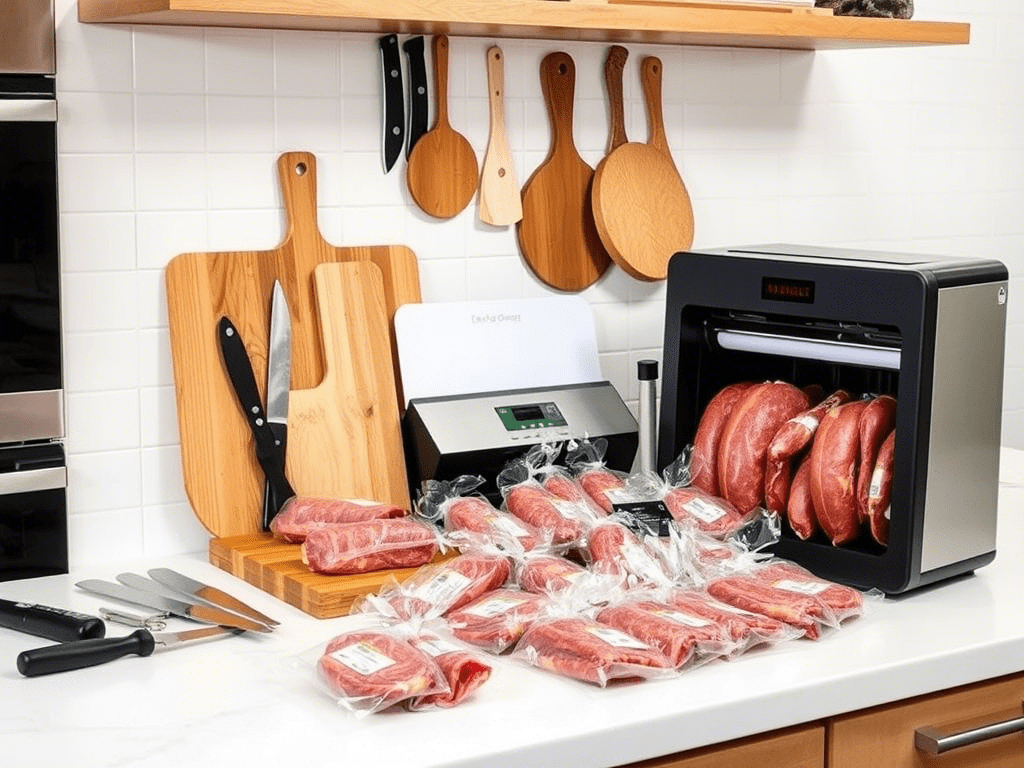
More Flavor-Focused Reads:
- Blackened Seasoning: 5 Irresistible Recipes You Need to Try
- Trader Joe’s Delivery Guide
- Cavatappi Pasta Guide
Recommended Essentials on Amazon:
- Charcuterie Boards & Knives – Perfect for building a party platter
- Vacuum Sealer for Meats – Keep your slices fresher, longer
- Italian Dry Sausage Sampler – Explore more regional styles
- Cheese Storage Paper – Ideal for cured meats too
With the right setup, this isn’t just an appetizer — it’s a conversation starter.

